Litchi is one of the most popular fruits in India, where production is the second highest after China. Litchi fruits are berry-like with a rough textured skin that is not edible. But the inside of the fruit is where all the magic lies. The inside pulp tastes sweet and is juicy to taste. The trees are large and evergreen, yielding many small berry fruits throughout the year. Check out the best practices to grow Lychee trees/fruits below.
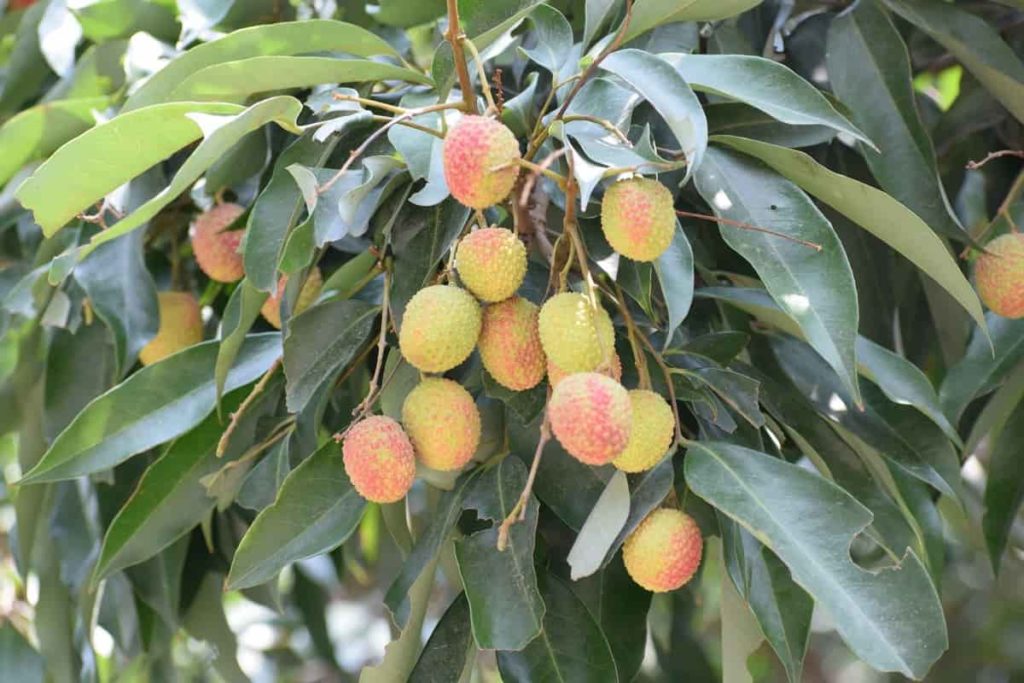
Scientifically named Litchi chinensis, litchi dates back to generations as old as the 11th century. Litchi trees can grow as long as 15m when provided with suitable manure. Litchi is a very famous fruit all over the globe, being consumed in various forms of shakes, as a flavor, and different other conditions. Even the bark of the tree has a wide range of applications. While there are enough factors to consider litchi as a beneficial fruit and plant, there are enough contradictory factors hint about litchi negatively.
Hence, the individual must decide depending on their circumstances and other influential decision-making factors. After the covid pandemic blew, the whole world had a huge impact. People on a large scale resolved to eat organic and homegrown food, have a better immune system and avoid artificial fertilizers and other harmful contaminants. So, along with other necessary ingredients, people cultivate litchi in their backyards and at home. Below are the common queries about growing litchi at home.
Best practices to grow Lychee trees/fruits
How can I grow litchi at home?
- Yes, litchi can be grown at home. Although litchi is usually a big evergreen subtropical tree and grows no less than 15-18m high, young litchi plants are grown in containers, similar to those found in nurseries. These plants are often short of a height identical to bonsai plants and other home decor plants, yielding decently like 5-10 litchi fruits per yield.
- Though grown in containers, litchi can be produced from two methods, traditionally from seed germination, which would consume much time. Vegetative methods are employed when faster growth is desired due to more significant requirements and demand. The popular methods used are grafting, air layering, and cuttings. These give quicker yield and take less time to grow.
How long does litchi take to grow?
- Litchi trees can take longer to grow; the least time needed to grow to a stage of at least beginning to fruit alone is no less than five years. Litchi grows very slowly with moderate conditions and can take as long as 30 years to grow 30 feet. It all depends on the weather conditions. In countries like India, it can grow to a height of what it produces in countries like Florida.
- The growth time of a litchi plant depends on the climatic conditions, the variety of soil used, the method of cultivation employed, and every contributing factor counts. However, as a general idea, it takes around five years for a short crop to be harvested and ten years for a big grown-up plant to bear fruit.
In case you missed it: Common Country Chicken Diseases: Symptoms and Treatment
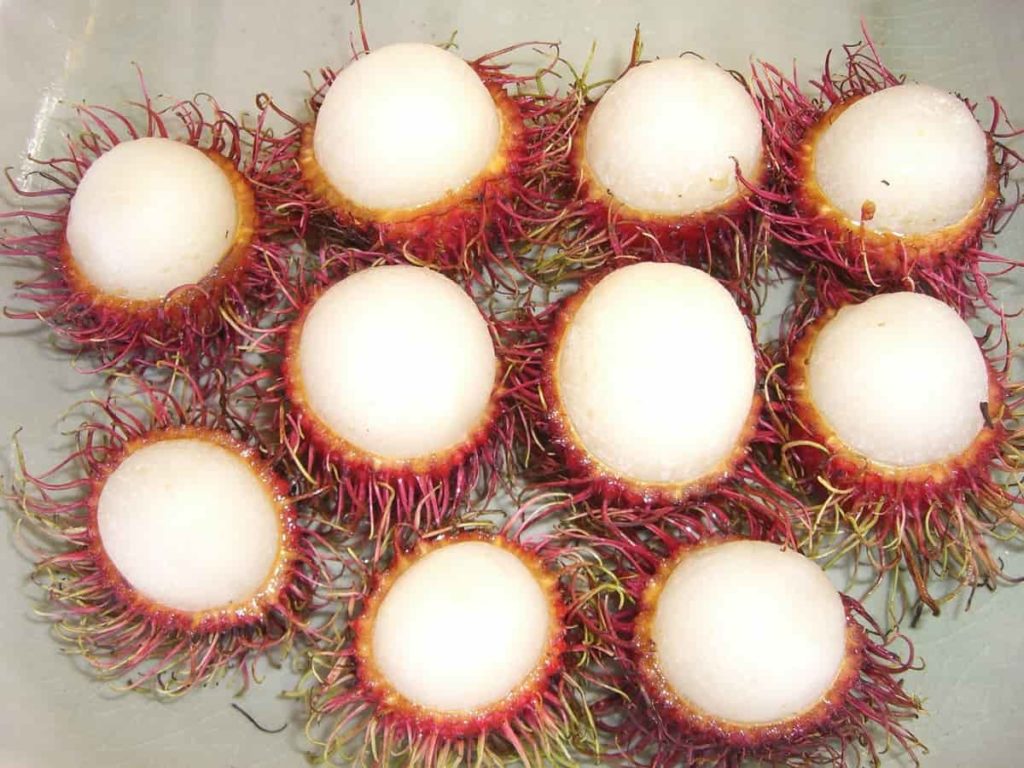
Which is the best month to grow litchi?
- Litchi grows best in moderate temperatures where the heat is neither too high nor too low. However, the Litchi seed is sensitive to temperatures and can damage easily when exposed to too much sun or die if underexposed.
- The months of spring, when the temperatures are mild and moderate, are perfect for the seeds to germinate and grow up. In India, it is usually during March and April. In European countries, it is the time of November and December. The decision of when to plant the seeds and when to harvest is ultimately taken only after considering the factors discussed.
How many litchis can one acre produce?
- Litchi usually gives an excellent yield, but the first yield would always be moderate and slow, as the soil and tree get used to the conditions and provide a good outcome. As time progresses, litchi gives greater yields and can quickly produce around 4.5 to 6 tonnes of litchi per acre in one year.
- Litchi plants grow and thrive for a very long time, like 50-60 years minimum, and they yield for almost all their lifespan other than the time taken to germinate and at the end of their lifespan. Therefore, on average, one litchi tree produces around 50-60 kilos per year, and depending upon the number of trees planted, the total produce of the acre is calculated.
What is the lifespan of the litchi tree?
- Litchi trees can live as long as 60 years on average. They grow up nice and slow and have a steady growth rate. Litchi plants do not begin to fruit till they are at least ten years old; for short plants, the duration is five years. This duration may vary across various geographical locations, but the growth rate and the time is taken always more.
- The growth rate of the litchi plant will depend on the climatic conditions, the type of soil provided, the manure in the soil, water supply frequency, and other contributing factors. For example, in cold countries like Florida, the time taken for a litchi plant to grow thirty feet in height can be as long as thirty years, but in sub-continental conditions like India, it can grow up to thirty m. This is one of the critical factors considered before planting a litchi seed in the soil.
- Litchi plants yield during most of their life about 90% of the time. This prolonged survival period is one of the significant factors why people with little cultivation experience choose to grow litchi over other crops. In addition, litchi can be comparatively easier to grow than similar fruit plants.
In case you missed it: Urban Gardening Ideas for Beginners: Tips, Tricks, and Techniques
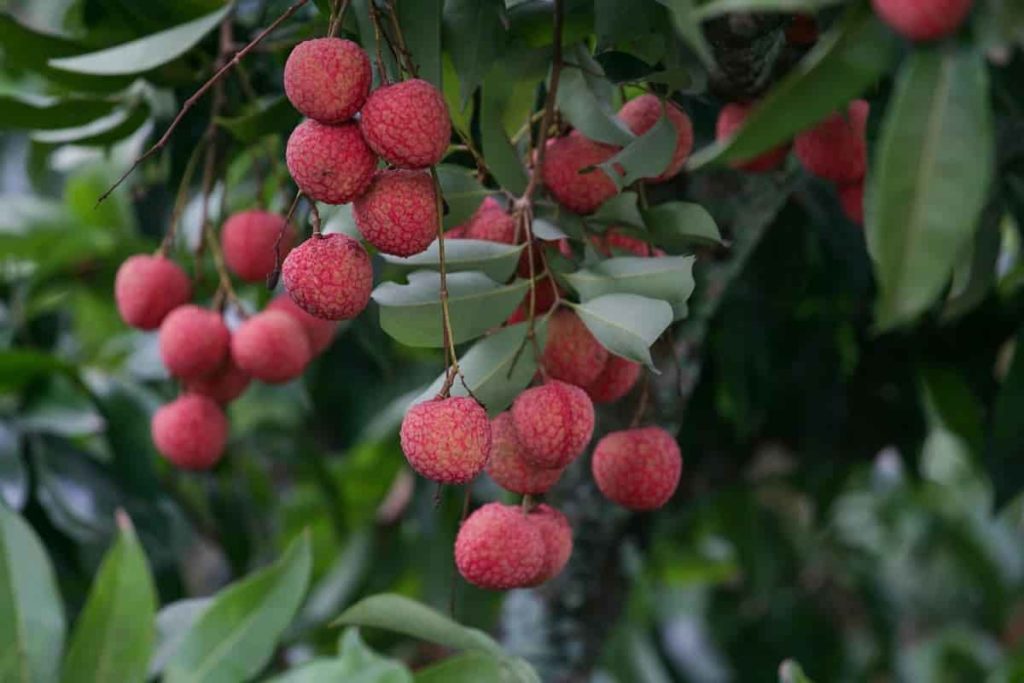
Does litchi need full sun?
- Yes, litchi plants do need full sun. But this condition is only applicable for moderate durations because longer durations of exposure to the sun can ruin the growth of a litchi plant by withering leaves and drying up stems. Hence the crop for litchi cultivation is decided to be planted in spring when the sunlight is neither too full nor too low but just enough for the plant to thrive.
- Litchi typically tolerates temperatures as low as twenty degree Celsius and can also take temperatures as high as forty degree Celsius.
- This difference in temperatures can arise due to various factors like cyclone effects, change in geographical locations from county to country, or the method of cultivation used. Using vegetative methods for cultivation does not require much temperature because germination has already been completed, and there is no need for seed germination, which saves time. However, for cultivation beginning from the seed stage, higher temperatures like thirty degree Celsius is best recommended. For obtaining the best yield, some people recommend allowing the seed to be planted at such a time that at least a hundred hours after the germination of the plant exists during winters so that temperature can be regulated.
- The temperatures during the growth of a litchi plant can highly influence the time taken for the plant to bear fruits. For example, during regular days, a litchi plant bears fruits after 9-10 years, but this can extend in case of prolonged winter conditions during the plant’s growth and vice versa. Hence one has to deliberately take care of the temperature around the litchi plant from the beginning stage of a seed till the time of harvest.
In case you missed it: A Guide to Understand Vertical Urban Farming/Gardening: Check How this Helps Beginners
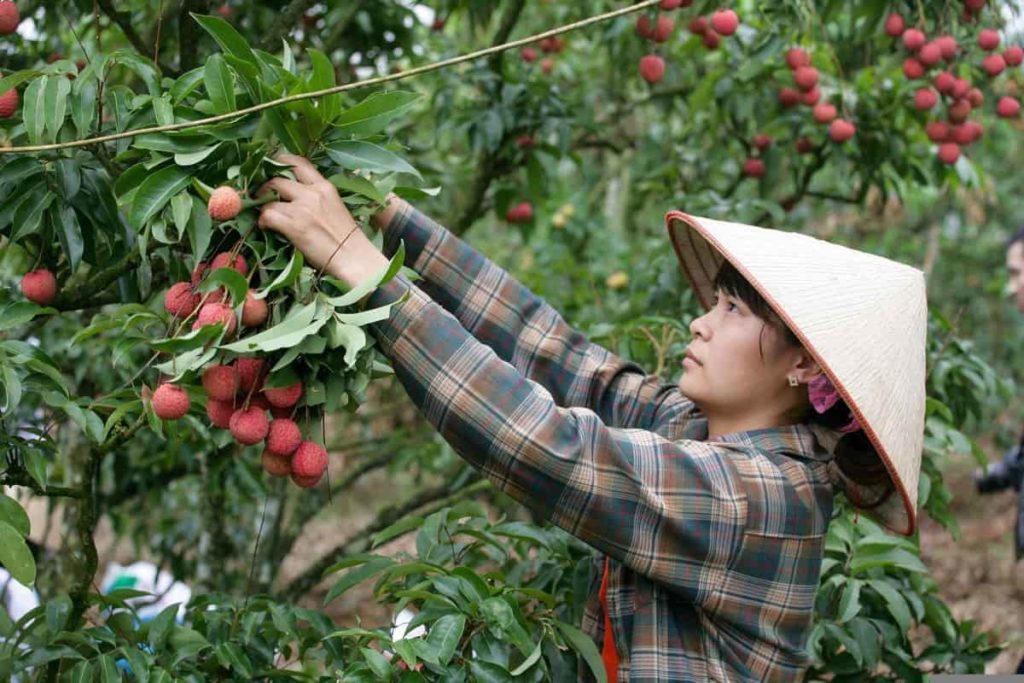
How much water do litchi trees need?
Being a very juicy fruit, litchi always requires an adequate water supply from the germination stage. Therefore, the soil selected is usually such that water is sufficiently retained for the seed to germinate and yield appropriately. If the plant is being cultivated in the container, water is supplied to a height of two inches above the soil frequently so that the seed germinates healthily with enough water to grow its roots deep into the ground. And the crown, according to the space available, usually ranges from 4-6 feet.
How can we increase the yield of litchi trees?
- Litchi trees yield best when grown in purely natural soil without artificial fertilizers spoiling their productivity. This is possible by supplying natural manure from organic compost, fermented vegetables, and other organic wastes. The type of soil used is also essential in increasing yield as it decides the water retention rate, its ability to sustain full sun, and provides support for the deep roots that grow from litchi plants.
- The productivity of litchi plants also depends on the method of cultivation, which is usually vegetative in modern times. Vegetative procedures such as grafting, air layering, etc. help the plant to yield faster since the germination period can be eliminated, and harvest can be done quicker.
What type of soil is best for litchi trees?
- Soil that can retain adequate water without overdosing on the seed is best suitable for the plant to grow to its total capacity. Therefore, drained loamy soil with a slightly acidic pH value ranging from 5.5-6.9 is selected, which best suits the requirements for a litchi plant to grow to its best yielding stage without much damage done to the plant.
- The soil selected must be in such a manner that it is rich in nutrients and has a water-draining capacity as well. The supply of organic manure or compost can boost the wealth of dirt. On average, around 2-3 kilos of organic vermicompost is supplied to the soil, making it best suited.
In case you missed it: Common Rabbit Diseases, Symptoms, Treatment: Check How this Guide Helps Rabbit Farmers
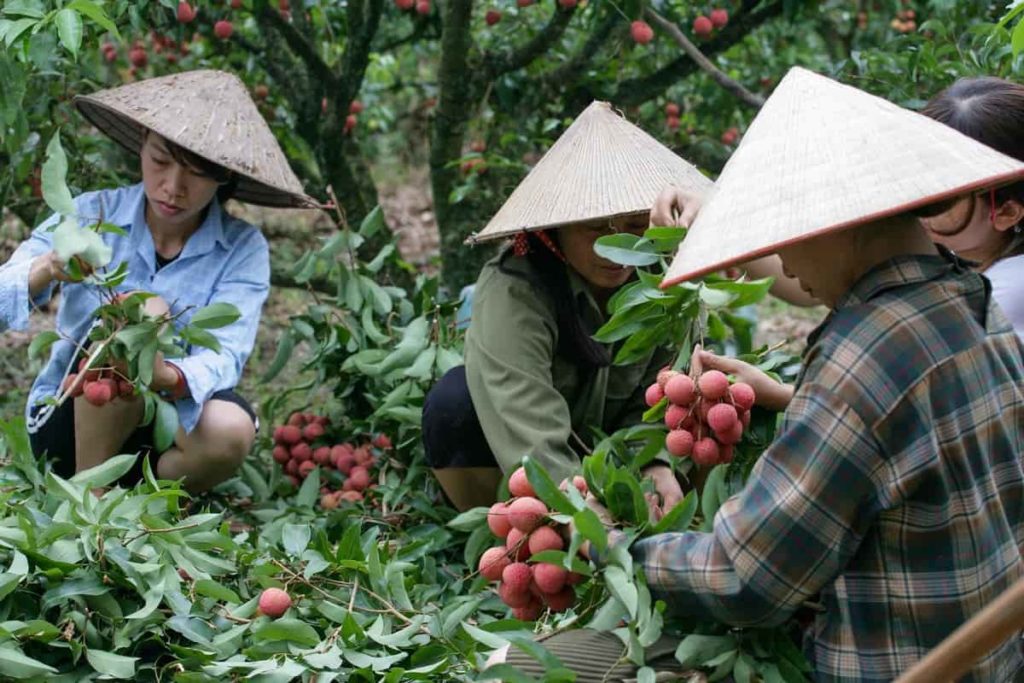
Can we grow litchi in pots?
- Yes, litchi can be grown in pots. But only varieties like the ones seen in the nursery, which are barely grown up to 3 feet, can be developed using vegetative methods like grafting and cutting. This is possible due to the elimination of the germination process of the plant, where it grows to a min of 8-10 feet.
- However, these varieties yield very low compared to the freely grown litchi plants. They are short-lived and can hardly deliver twice before their lifespan ends. Litchi grown in pots from seeds are planted deep into the soil for about 5-10 inches inside, ensuring proper soil cover over the seed with adequate water supply.
How long does it take for a litchi tree to bear fruit?
- Litchi plants bear fruit once the plant is fully grown to its maximum potential. This would generally take 7-10 years in the case of openly grown plants. With container crops, the time taken to bear fruit can be 70-100 days after flowering is observed. This can again vary with changing weather and geographical conditions.
- In countries with low temperatures, bearing fruit for a litchi plant can take as long as one year. It is for the very same reason time for seed sowing is decided in a manner so as not to harvest in the winters without proper development of fruits.
What is the fastest way to germinate litchi seeds?
The fastest way to germinate any seed is by using priming. This is done to trigger the process of germination within the seed even before they are sown into the soil, so the actual growth process happens a little quicker. The seeds are first obtained from a trusted vendor or source and are cleaned for any covering or plastic layering.
In case you missed it: Lychee Fruit Cultivation Information Guide
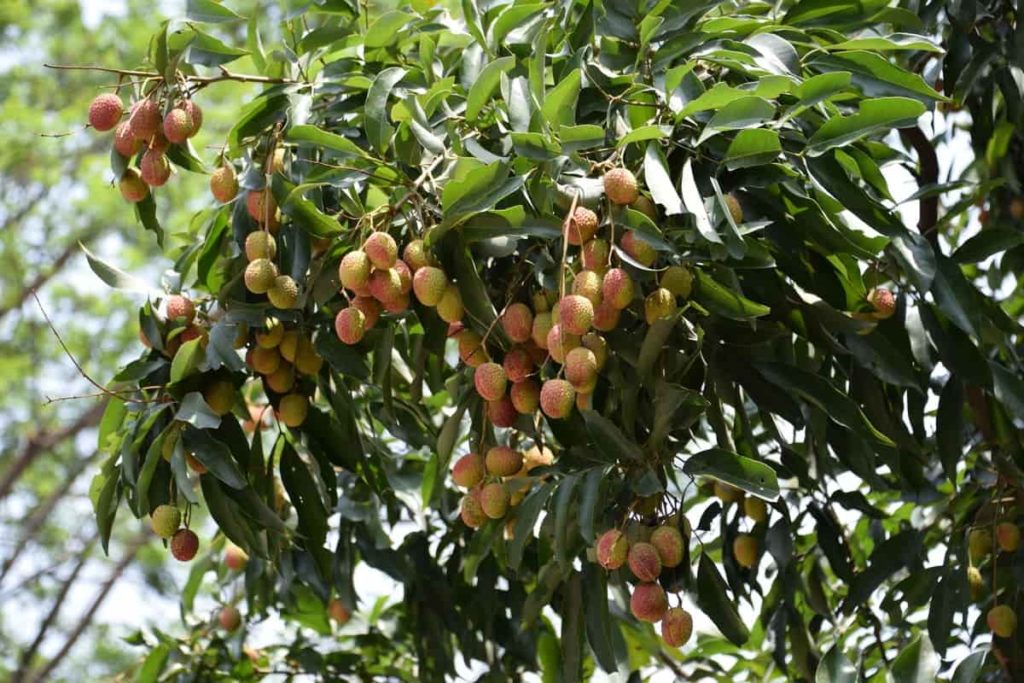
The next step is to collect rich soil with natural compost manure, which boosts the growth of the seedling. The cleaned seeds are placed in the soil and covered well, followed by a water supply in the right quantities. The seeds are allowed to soak for more than 24 hours; the following day, these seeds are sown into the actual cultivation site.
Conclusion
Besides the above-discussed techniques, litchi is also grown in soil beds and using a method called mulching, which is the direct supply of organic vermicompost alongside the stem of the soil and the roots. Even though it takes very long for the litchi plants to grow and bear fruits, with the first yield being meager, experienced farmers and cultivators grow litchi on a huge scale due to the demand and value it holds in the domestic market. The average annual yield of 50-70 kilos per plant is enough to understand why litchi is one of the most famous commercial crops in the world. These are some common queries regarding the cultivation of litchi at home.
- Crops Grown in Summer Season: Best Choices for Summer Gardening
- Organic Pest Control for Tomato Farming
- How to Maximize Sheep Farming Profit
- Broccoli Varieties: Choosing the Right Cultivars for Your Farm
- How to Raise Pigs in Your Own Backyard: A Comprehensive Guide
- Budget Friendly Sheep Shed Ideas: Cheap and Low-Cost Tips
- How Much Do Cattle Farmers Make: Revenue Streams in Cattle Farming
- Management Pests and Diseases in Your Cotton Field
- Sheep Farming Business Plan for Beginners
- Aquaponic Farming at Home: A Step-By-Step Guide
- Profitable Village Farming Business Ideas in 2024
- High-Yield Aquaculture: Fast-Growing Fish for Farming
- Effective Fish Pond Construction Techniques for Beginners
- Irrigation and Water Management in Pineapple Farming
- Blossom to Harvest: Mastering Flowering and Pollination in Papaya Farming
- Pig Fattening Essentials: From Selection to Sale for Beginners
- Raising Wagyu Cattle: A Complete Guide for Premium Beef Production
- Soil Types and Their Water Holding Capacity
- Optimizing Irrigation Schedules for Coconut Groves for Enhanced Yield
- Espresso Your Garden: Coffee Grounds for Healthier Acid-Loving Plants
- The Best Soil Mix for Snake Plants: How to Mix Your Own Snake Plant Soil
- Green Thumb Success: Expert Tips for Cultivating Greenhouse Beans All Year Round
- Bloom All Year Round: The Ultimate Guide to Indoor Hyacinth Care
- Eco-Friendly Gardening: How to Make Liquid Fertilizer from Kitchen Waste
- Ultimate Guide to Grow Anise in Pots: Explore Seed Propagation to Harvesting
- Guide to Raising Chester White Pigs: Discover Breed Facts to Growth Management
- Mastering the Elegance: The Ultimate Guide to Weeping Cherry Tree Care, Planting, and Maintenance
- Ultimate Guide to Planting Garlic in Grow Bags: Growing Strategies for Beginners
- How to Fix Spider Plant Leaf-Related Problems: Natural and Organic Remedies
- 10 Reasons Why Your Tulsi Plant is Shedding Leaves: Home Remedies and Solutions
- Optimizing Growth and Yield: The Advantages of Palm Bunch Ash Fertilizer
- Utilizing Neem Oil Extract as a Natural Pesticide for Hydrangea
- From Soil to Harvest: Various Ways in Which Farmers Can Use AI Tools
- Steps to Encourage and Induce Citrus Flowers: A Comprehensive Guide
- How to Fix Snake Plant Leaf-Related Issues: Natural and Organic Remedies
- Transform Your Garden into a Fragrant Oasis with Raat Ki Rani (Night Blooming Jasmine)
